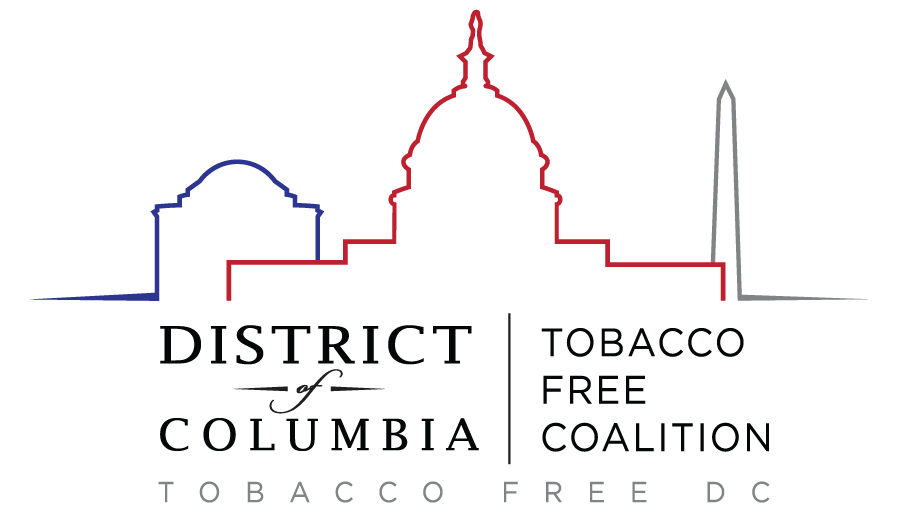Tobacco Use and Mental Health
Ja’Miera Stuart, PharmD
PGY-1 Pharmacy Resident, Howard University Hospital
In light of World Mental Health Day approaching on October 10th, it is imperative to address the detrimental effects of tobacco use on mental health and overall wellbeing. According to the CDC, tobacco use is the leading cause of preventable disease, disability, and death in the United States.[1] In 2019, an estimated 14% (34.1 million) adults in the United States smoked cigarettes and more than 480,000 of those individuals died due to complications of cigarette smoking.[1,2] Locally, 12.7% of adults in the District of Columbia reported smoking cigarettes and 36.5% of high school students reported using tobacco containing products. The use of tobacco in our community will be the cause of death in approximately 800 District of Columbia residents this year.[3]
Tobacco is composed of nicotine and carcinogens, and is readily available as cigarettes, cigars, smokeless tobacco, hookahs, and electronic cigarettes.[1,4] Though nicotine is the addictive component of tobacco, the carcinogens contribute to the harmful effects of tobacco use that affect every system in the body.1 Nicotine is absorbed into the bloodstream and travels to the heart where it is pumped throughout the body, including the brain. When tobacco smoke is inhaled, the nicotine induces brain psychoactivity that occurs within seconds which contributes to the addictive properties of tobacco.[5] This activity occurs as a result of stimulation of the nicotinic cholinergic receptors in the brain, which causes the release of neurotransmitters such as dopamine and transiently stimulates the body’s reward pathway. With continued use of tobacco, there is an increase in the number of nicotinic receptors in the brain which creates a level of dependence which may lead to addiction.[6]
Mental illness is characterized as changes in mood, thinking and behavior and affects nearly one in five Americans. These diagnoses may include, but are not limited to, anxiety, depression, bipolar disorder and schizophrenia.[7] Individuals with mental illness are at increased risk of tobacco use and addiction.[8] Nearly 1 in 4 adults have a form of mental illness or substance use disorder, and these adults consume 40% of all cigarettes smoked by adults.[9] Tobacco use can temporarily alleviate symptoms like poor concentration, low mood, and stress – effects that can occur in mental illnesses, which leads to increased tobacco use and nicotine dependence.8 Another caveat to consider is that smoking tobacco may increase the metabolism of medications used to treat mental illness and thus lower the medications’ effects.5 This can cause mental health burden if the disorder is not being appropriately managed with medications. There is also a correlation with mental illness and tobacco use in adolescents. Tobacco use is more detrimental to brain maturation in adolescents and consequently they are at increased risk for development of mental illness and other mental health disorders.[10]
The effects of tobacco use have also been associated with short term reduction of stress and anxiety.[8] However, since this change in mood is only temporary, continuous tobacco intake is required to combat symptoms of withdrawal. Tobacco withdrawal is characterized as irritability, frustration or anger, anxiety, difficulty concentrating, restlessness, depressed mood and insomnia, which significantly impairs functioning when tobacco is discontinued.[11] These symptoms occur and cause great strain on overall mental health and well-being.
Mental health is greatly impacted by tobacco use. Nicotine and the other harmful components of tobacco not only affect mental health but overall well-being. Individuals may find it challenging to quit tobacco use due to the demands that withdrawal can put on one’s mental health, but quitting has long term benefits on health. Quitting should not be done alone. Contact your healthcare provider to find out what medications are available and 1-800-QUIT-NOW for support regarding quitting options.
_______________________
Resources
1. U.S. Department of Health and Human Services. The Health Consequences of Smoking—50 Years of Progress: A Report of the Surgeon General. Atlanta: U.S. Department of Health and Human Services, Centers for Disease Control and Prevention, National Center for Chronic Disease Prevention and Health Promotion, Office on Smoking and Health, 2014 [accessed 2022 Feb 28]
2. Cornelius ME, Wang TW, Jamal A, Loretan C, Neff L. Tobacco Product Use Among Adults – United States, 2019. Morbidity and Mortality Weekly Report, 2020. Volume 69(issue 46); pages 1736–1742. [accessed 2022 March 01].
3. Centers for Disease Control and Prevention. Extinguishing the Tobacco Epidemic in Washington D.C. [accessed 2022 March 01].
4. O'Brien EK, Hoffman L, Navarro MA, et al. Social media use by leading US e-cigarette, cigarette, smokeless tobacco, cigar and hookah brands. Tobacco Control 2020;29:e87-e97.
5. Benowitz NL, Hukkanen J, Jacob P 3rd. Nicotine chemistry, metabolism, kinetics and biomarkers. Handb Exp Pharmacol. 2009;(192):29-60. doi:10.1007/978-3-540-69248-5_2
6. Benowitz NL. Pharmacology of nicotine: addiction, smoking-induced disease, and therapeutics. Annu Rev Pharmacol Toxicol. 2009;49:57-71. doi:10.1146/annurev.pharmtox.48.113006.094742
7. American Psychiatric Association. What is Mental Illness?. Retrieved from https://www.psychiatry.org/patients-families/what-is-mental-illness [accessed 2022 March 01].
8. NIDA. 2021, April 12. Do people with mental illness and substance use disorders use tobacco more often?. Retrieved from https://nida.nih.gov/publications/research-reports/tobacco-nicotine-e-cigarettes/do-people-mental-illness-substance-use-disorders-use-tobacco-more-often [accessed on 2022, March 11]
9. Centers for Disease Control and Prevention. Tobacco Use and Quitting Among Individuals With Behavioral Health Conditions. [accessed on 2022, March 11]
10. Goriounova NA, Mansvelder HD. Short- and long-term consequences of nicotine exposure during adolescence for prefrontal cortex neuronal network function. Cold Spring Harb Perspect Med. 2012;2(12):a012120. Published 2012 Dec 1. doi:10.1101/cshperspect.a012120
11. American Psychiatric Association. (2013). Diagnostic and statistical manual of mental disorders (5th ed.). https://doi.org/10.1176/appi.books.9780890425596




